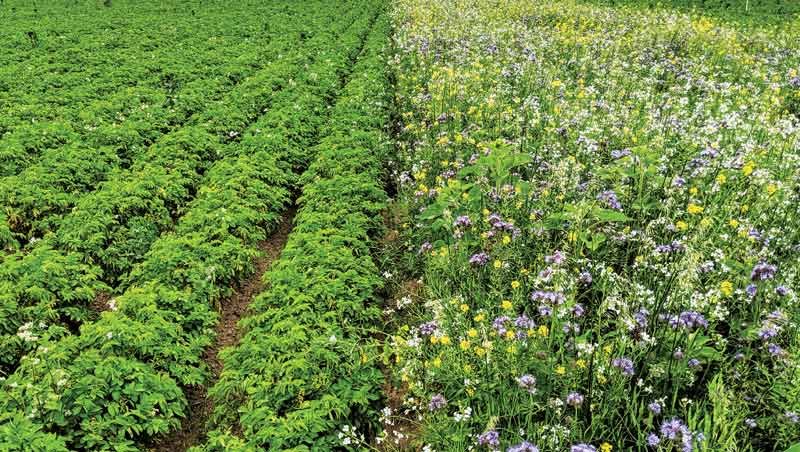No-Till Farmer
Get full access NOW to the most comprehensive, powerful and easy-to-use online resource for no-tillage practices. Just one good idea will pay for your subscription hundreds of times over.

COLORFUL CARE. Right after planting potatoes, Brendon Rockey plants flowering strips in his fields and around the field borders to cater to beneficial insects that help control cropping pests. Rockey notes the plants exude droplets of sugar even before they bloom, “so we get an early start on establishing those beneficial insects in those flowering strips.”
For all intents and purposes, Brendon Rockey farms in a desert where native soils have almost zero organic matter and precipitation is infrequent. But as bleak as that may sound, Rockey’s farm is actually thriving and biologically active.
Farming at an elevation of 7,600 feet with only 6 inches of annual precipitation, Rockey has over the last 2 decades built a flourishing “biotic” ecosystem that has improved water-use efficiency and encourages beneficial insects, soil microbes and carbon cycling.
Companion cropping, cover crops and flowering strips have replaced synthetic fertilizers, herbicides, fungicides and insecticides on his 500-acre irrigated farm near Center, Colo., about 140 miles southwest of Denver, where he raises specialty fingerling potatoes, quinoa and certified seed potatoes in a greenhouse.
He also grazes others’ livestock in cover-cropped fields and operates an off-site farm packaging warehouse.
Although raising potatoes doesn’t allow him to utilize no-till, he says the overall focus on using cover crops, compost and…